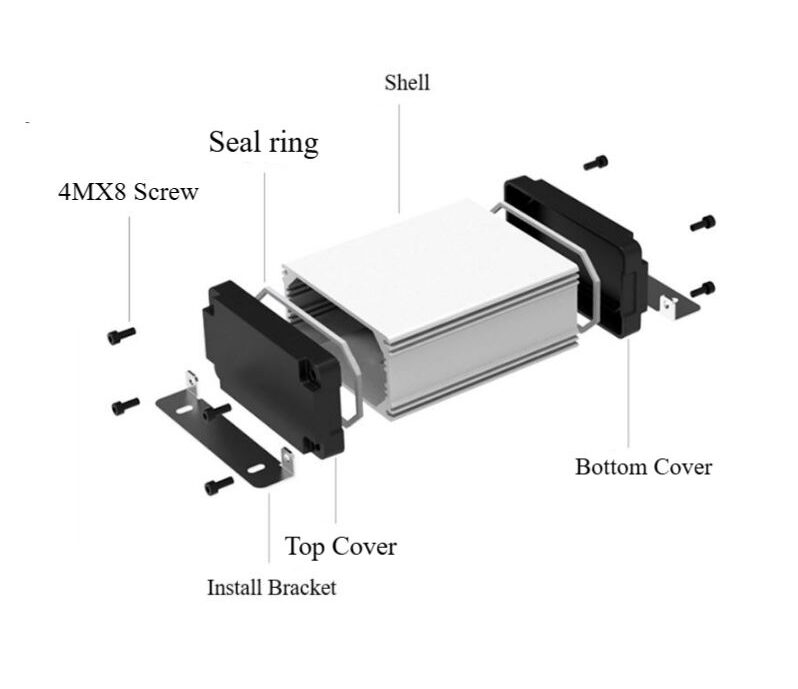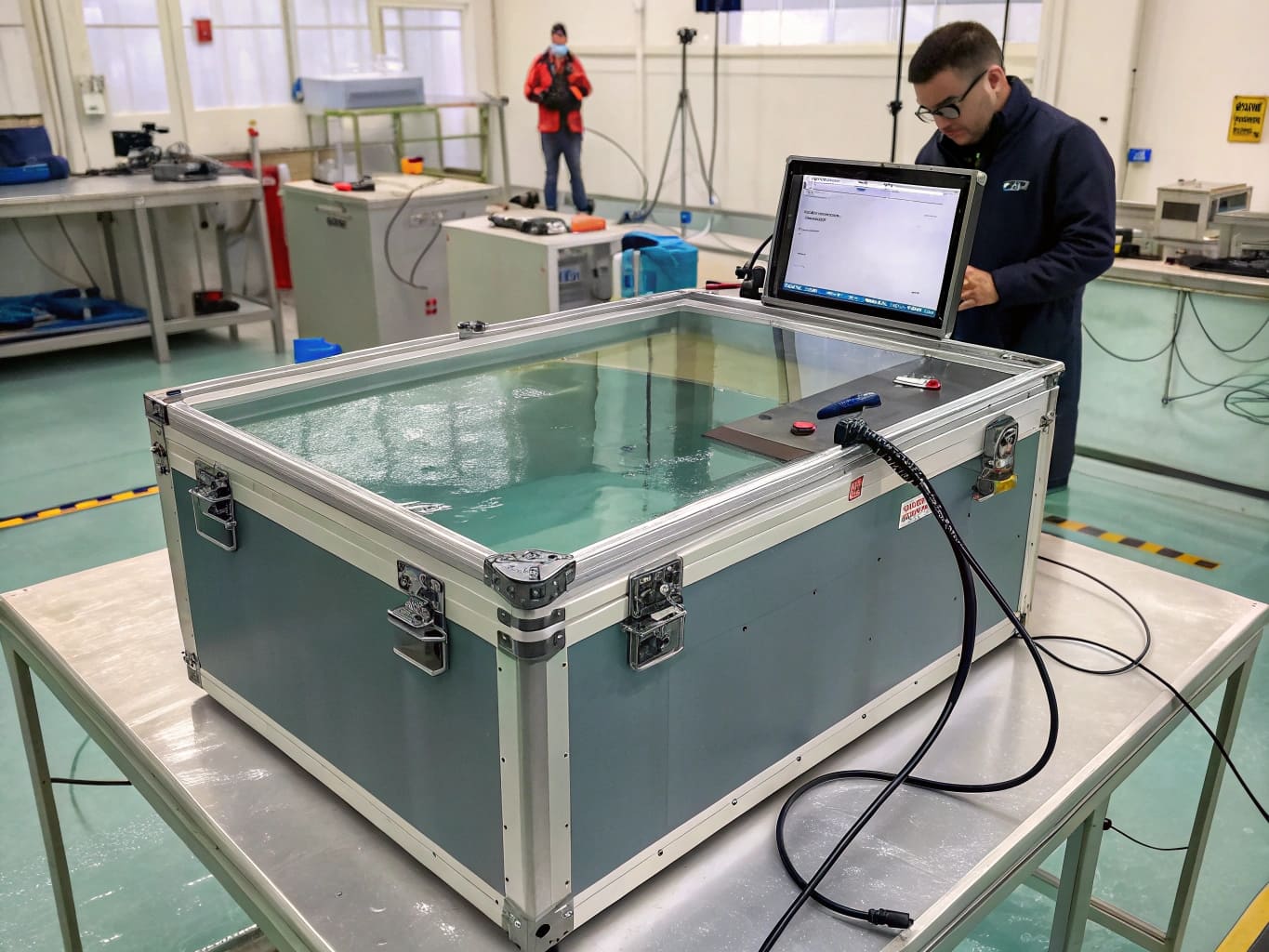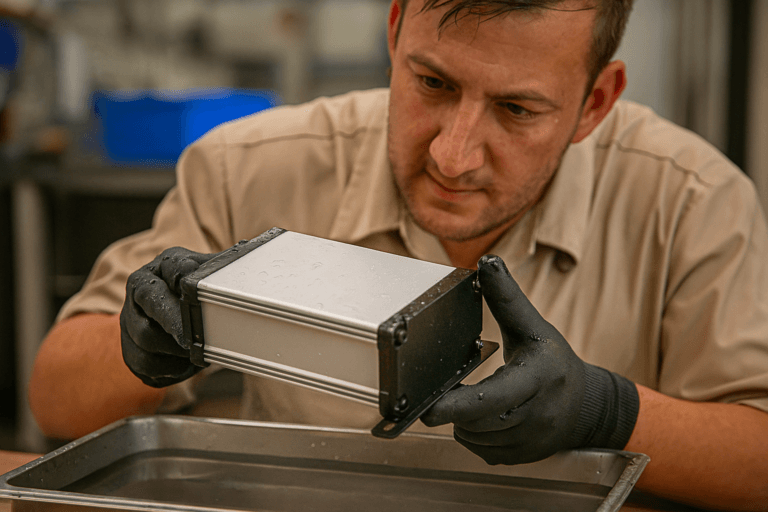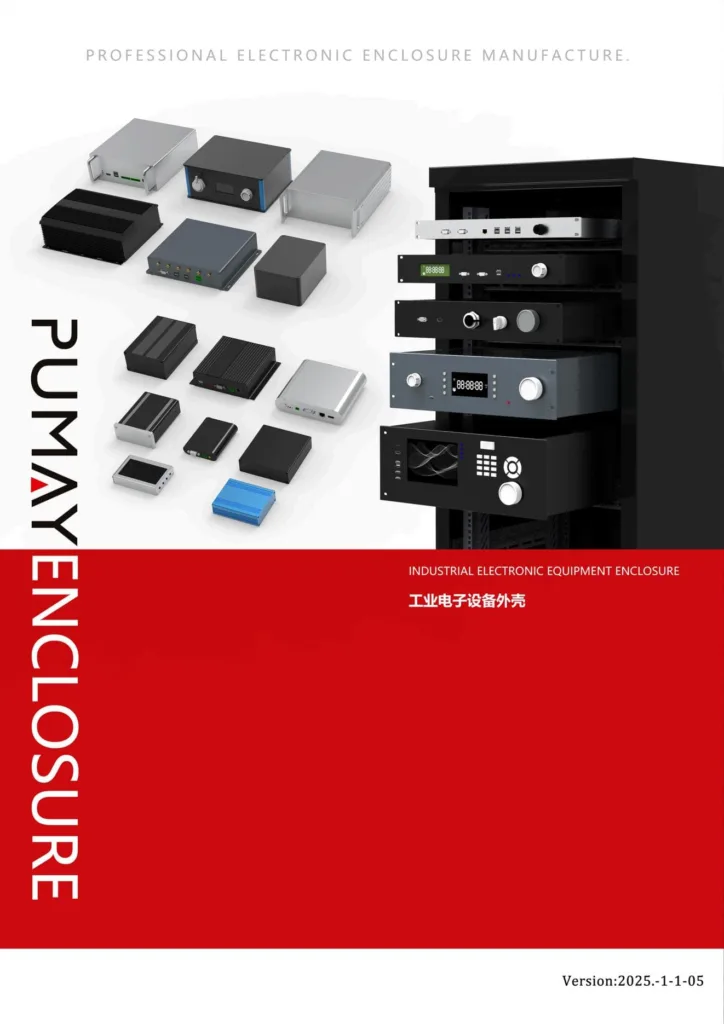Struggling with waterproof failures in aluminum enclosures1? Even tiny leaks compromise electronics, causing equipment failures and costly maintenance.
Reliable waterproof sealing for aluminum enclosures requires careful selection of gasket materials2 (silicone3, EPDM4), precise sealing groove designs, proper compression, and validation through IP67/IP68 testing5 to ensure complete protection against water ingress6.
 "Sealing Technology for Waterproof Aluminum Enclosures"
"Sealing Technology for Waterproof Aluminum Enclosures"
Throughout my career, waterproofing has been a common challenge for engineers designing aluminum enclosures. Let's explore proven sealing technologies to ensure your electronics remain dry and functional.
Why is gasket material selection crucial for waterproof aluminum enclosures?
Experiencing water ingress6 despite thorough sealing attempts? Poor gasket selection7 often leads to compromised waterproof performance and frequent failures.
Selecting the right gasket material, such as silicone or EPDM, is essential for waterproof sealing8 in aluminum enclosures. These materials provide excellent elasticity, temperature resistance, and durability, ensuring reliable, long-term protection against moisture ingress9.
 "Gasket Material Selection for Waterproof Aluminum Enclosures")
"Gasket Material Selection for Waterproof Aluminum Enclosures")
I’ve seen gasket material choice significantly affect waterproofing reliability. Silicone and EPDM are widely used due to their excellent performance across diverse environmental conditions10. Choosing the wrong gasket material, however, quickly results in degradation, leaks, and increased maintenance costs.
Comparison of common gasket materials:
| Material | Elasticity | Temperature Range | Durability | Chemical Resistance |
|---|---|---|---|---|
| Silicone | Excellent | -60 to +230°C | High | Good |
| EPDM | Good | -40 to +120°C | High | Excellent |
| NBR | Moderate | -30 to +100°C | Medium | Good |
Silicone is often my recommendation because of its excellent flexibility and temperature stability, providing the best all-around waterproof performance.
How do sealing groove designs11 impact waterproof effectiveness?
Still struggling with leakage despite quality gaskets? Incorrect sealing groove design can undermine even the best gasket materials, leading to waterproofing failures.
Proper sealing groove design, including correct dimensions, depth, width, and surface finish, ensures optimal gasket compression and uniform sealing pressure, effectively preventing water ingress6 into aluminum enclosures.
 "Sealing Groove Design for Waterproof Aluminum Enclosures"
"Sealing Groove Design for Waterproof Aluminum Enclosures"
Sealing groove design directly influences gasket effectiveness. I've encountered projects where small deviations in groove dimensions resulted in persistent leaks. Optimal sealing groove design ensures proper gasket compression, distributing pressure evenly and maintaining reliable sealing over time.
Key design factors include:
- Groove depth & width: Ensures sufficient gasket compression.
- Corner radius: Prevents gasket pinching or deformation.
- Surface finish: Smooth finish enhances sealing effectiveness12.
Here’s an example of effective groove dimensions for silicone3 gaskets:
| Gasket Diameter | Recommended Groove Width | Groove Depth | Compression (%) |
|---|---|---|---|
| Ø3 mm | 2.4–2.6 mm | 2.0–2.2 mm | 15–25% |
| Ø5 mm | 4.0–4.2 mm | 3.5–3.7 mm | 15–25% |
| Ø8 mm | 6.4–6.8 mm | 5.6–6.0 mm | 15–25% |
Correctly sized grooves significantly improve waterproof sealing effectiveness, minimizing failure risk.
Why is gasket compression critical in waterproof aluminum enclosures?
Seeing repeated water ingress6 despite proper groove design and gasket materials2? Inadequate or excessive gasket compression13 directly compromises sealing integrity.
Optimal gasket compression ensures uniform sealing pressure, preventing gaps or deformation that cause leaks. Typically, 15–25% compression is recommended to achieve reliable, long-lasting waterproof performance.
 "Gasket Compression Importance in Aluminum Enclosures")
"Gasket Compression Importance in Aluminum Enclosures")
I’ve observed gasket compression as a critical factor often underestimated by engineers. Incorrect compression, either too high or too low, significantly impacts waterproof sealing effectiveness:
- Insufficient compression: Creates gaps, allowing moisture ingress9.
- Excessive compression: Causes gasket deformation, reducing sealing reliability over time.
A guideline for optimal gasket compression:
| Compression Level | Sealing Reliability | Gasket Life | Risk of Leakage |
|---|---|---|---|
| <10% | Poor | Long | High |
| 15–25% | Excellent | Optimal | Low |
| >30% | Moderate-Low | Shorter | Medium-High |
Maintaining gasket compression around 20% provides an ideal balance, ensuring consistent waterproof performance and gasket longevity.
How do IP67/IP68 tests validate enclosure sealing performance?
Unsure if your waterproof sealing actually meets your project's requirements? Without proper validation, you risk unexpected water damage in real-world conditions.
IP67/IP68 tests validate enclosure sealing by subjecting aluminum enclosures to controlled water immersion tests, ensuring compliance with stringent waterproof standards required in industrial and outdoor applications.
 "IP67/IP68 Waterproof Validation Testing"
"IP67/IP68 Waterproof Validation Testing"
I've seen firsthand that relying solely on theoretical sealing designs isn't enough. Real-world testing is essential. IP67/IP68 standards rigorously test waterproof capabilities through specific procedures:
- IP67: Submersion in 1 meter of water for 30 minutes.
- IP68: Continuous submersion at depths beyond 1 meter (customized conditions).
IP rating comparison table:
| Rating | Dust Protection | Water Protection | Typical Applications |
|---|---|---|---|
| IP67 | Complete | Temporary immersion (1m, 30 min) | Outdoor instruments, industrial use |
| IP68 | Complete | Continuous immersion (custom depth/time) | Underwater sensors, harsh environments |
Conducting IP tests ensures that sealing designs perform reliably under realistic conditions, avoiding costly failures in the field.
Conclusion
Reliable waterproof sealing in aluminum enclosures demands careful gasket material selection, precise groove design, optimal compression, and rigorous IP67/IP68 validation tests, ensuring complete protection against water ingress.
Understanding the causes of waterproof failures can help you prevent costly equipment damage. ↩
Explore the best gasket materials to ensure long-lasting waterproof performance in your projects. ↩ ↩
Learn why silicone is favored for its elasticity and durability in waterproof applications. ↩ ↩
Discover the benefits of EPDM and how it can enhance your waterproof sealing solutions. ↩
Explore the rigorous testing processes that validate waterproof sealing performance. ↩
Identifying causes of water ingress can help you design better waterproof solutions. ↩ ↩ ↩ ↩
Choosing the right gasket is crucial for effective waterproofing; learn how to make the best choice. ↩
Discover best practices to enhance waterproof sealing in your electronic designs. ↩
Preventing moisture ingress is vital for electronics; learn effective strategies. ↩ ↩
Understanding environmental impacts can help you select the right materials for durability. ↩
Understanding groove design can significantly improve your waterproofing effectiveness. ↩
Explore key factors that enhance sealing effectiveness and prevent leaks. ↩
Learn how proper gasket compression can prevent leaks and ensure reliable sealing. ↩





